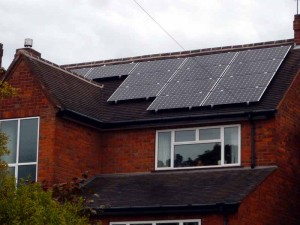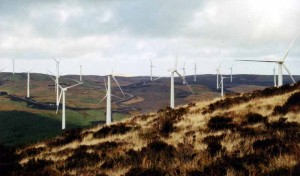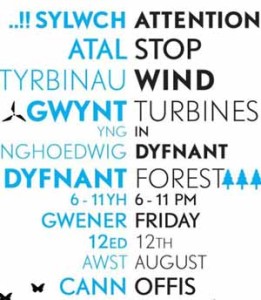Alan Clawley comes face to face with the realities of a ‘low carbon’ economy: “What’s in it for me?”
 I’ve noticed more than one house or cottage in several villages around Birmingham that I’ve recently passed through on a country walk, with big arrays of solar electric and solar water panels on their roofs. These are not run-of–the mill villages, but award-winning ones built from Cotswold stone and roofed in red tiles or natural slate, though I have yet to see a solar panel on a thatched roof.
I’ve noticed more than one house or cottage in several villages around Birmingham that I’ve recently passed through on a country walk, with big arrays of solar electric and solar water panels on their roofs. These are not run-of–the mill villages, but award-winning ones built from Cotswold stone and roofed in red tiles or natural slate, though I have yet to see a solar panel on a thatched roof.
I once heard someone say that a solar array spoiled what I thought was an ordinary sixties bungalow in Birmingham, so I was surprised to see them popping up in a Cotswold village. Why had the owners of these lovely old buildings been so quick to put them on their roofs for all the world to see? They are more prominent than they need to be because each panel, of which there can be 10 or more on a roof, has a shiny aluminium frame around it. They would be less jarring if the colour of the frames were closer to the colour of the panels themselves or the colour of the roof. But, perhaps at this early stage in the growth of the industry the suppliers of the panels like them to stand out, as do their owners, who appear happy to show off the latest example of conspicuous consumption.
It looks as if they all rushed to benefit from the generous Feed-In-Tariff before it was reduced to a less rewarding level. Getting planning permission must have been ridiculously easy if not unnecessary. But, as pioneers they will have to live for a long time with any shortcomings of what are still prototype products.
 Admirable though solar power is I couldn’t help contrasting the attitude of country communities to wind farms. Opposition to any plan for one or more turbines on a hill in view of a village is guaranteed. Planning permission is hard to get. I even doubt whether the fact that a hill has had a windmill on it for centuries would make any difference, and even a South Wales community that had been blighted by open cast coal-mining was hostile at first to a small community wind farm on the surrounding moors.
Admirable though solar power is I couldn’t help contrasting the attitude of country communities to wind farms. Opposition to any plan for one or more turbines on a hill in view of a village is guaranteed. Planning permission is hard to get. I even doubt whether the fact that a hill has had a windmill on it for centuries would make any difference, and even a South Wales community that had been blighted by open cast coal-mining was hostile at first to a small community wind farm on the surrounding moors.
 I can only conclude that the beauty of either form of renewal energy is in the eye of the beholder and that if the big remote profit-making builders of wind farms offered the surrounding communities a share in the business or a big discount on their electricity, their attitudes would change overnight.
I can only conclude that the beauty of either form of renewal energy is in the eye of the beholder and that if the big remote profit-making builders of wind farms offered the surrounding communities a share in the business or a big discount on their electricity, their attitudes would change overnight.
It’s a chastening thought for a green idealist, but it does seem that ‘money’ will have to be the force that drives people towards a low-carbon economy.


